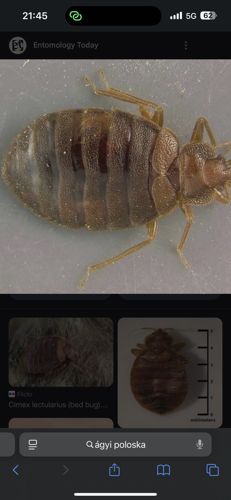Bed Bug
Scientific Name: Cimex lectularius
Order & Family: Hemiptera, Cimicidae
Size: Adults are typically 4-5 mm (0.16-0.20 inches) long, oval, and flattened. After feeding, they become engorged and reddish-brown.

Natural Habitat
Infests homes, hotels, dormitories, and any place where people sleep or rest. They hide in mattresses, bed frames, furniture, cracks in walls, gaps behind baseboards, and electrical outlets.
Diet & Feeding
Exclusively blood of warm-blooded animals, primarily humans, but also pets and livestock.
Behavior Patterns
Nocturnal; they hide in cracks and crevices during the day and come out to feed on blood at night. They are attracted to warmth and carbon dioxide. Females lay 1-12 eggs per day, totaling 200-500 eggs in their lifetime. Eggs hatch in 6-17 days, and nymphs mature in 21 days or more, depending on feeding and temperature. They can survive for several months to over a year without a blood meal.
Risks & Benefits
Risks: Bed bug bites can cause itchy welts, skin irritation, and allergic reactions in some individuals. While they are not known to transmit diseases, their bites can lead to secondary skin infections from scratching. They can also cause psychological distress, anxiety, and sleep deprivation. Benefits: None known to humans or the ecosystem; they are considered a nuisance pest.
Identified on: 9/3/2025